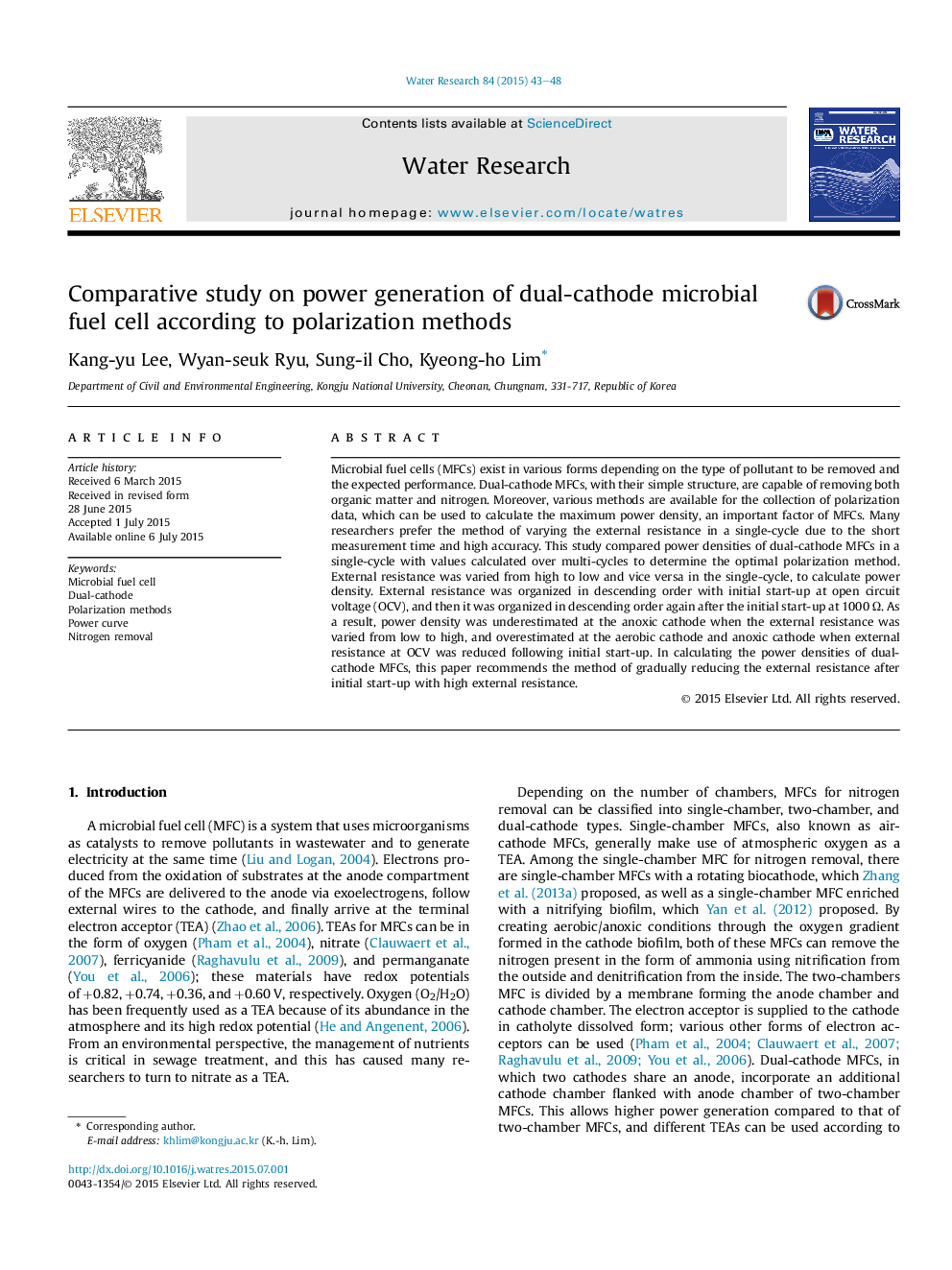| Article ID | Journal | Published Year | Pages | File Type |
|---|---|---|---|---|
| 4481071 | Water Research | 2015 | 6 Pages |
•A polarization method for nitrogen removal in dual-cathode microbial fuel cell is proposed.•The power density is depending on change order of external resistance.•The power density is affected initial operation time and applied external resistance.•Not lasting the peak current, the power density is underestimated.•Polarization method has a great influence on the power density of anoxic cathode.
Microbial fuel cells (MFCs) exist in various forms depending on the type of pollutant to be removed and the expected performance. Dual-cathode MFCs, with their simple structure, are capable of removing both organic matter and nitrogen. Moreover, various methods are available for the collection of polarization data, which can be used to calculate the maximum power density, an important factor of MFCs. Many researchers prefer the method of varying the external resistance in a single-cycle due to the short measurement time and high accuracy. This study compared power densities of dual-cathode MFCs in a single-cycle with values calculated over multi-cycles to determine the optimal polarization method. External resistance was varied from high to low and vice versa in the single-cycle, to calculate power density. External resistance was organized in descending order with initial start-up at open circuit voltage (OCV), and then it was organized in descending order again after the initial start-up at 1000 Ω. As a result, power density was underestimated at the anoxic cathode when the external resistance was varied from low to high, and overestimated at the aerobic cathode and anoxic cathode when external resistance at OCV was reduced following initial start-up. In calculating the power densities of dual-cathode MFCs, this paper recommends the method of gradually reducing the external resistance after initial start-up with high external resistance.
Graphical abstractFigure optionsDownload full-size imageDownload high-quality image (263 K)Download as PowerPoint slide
